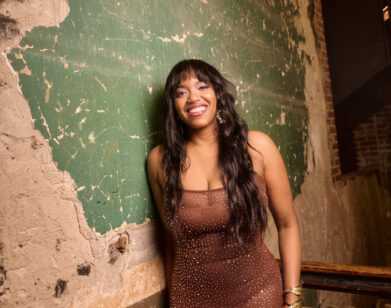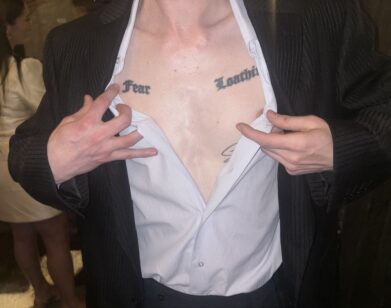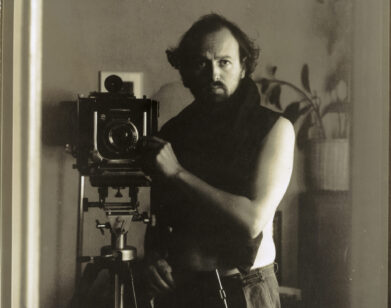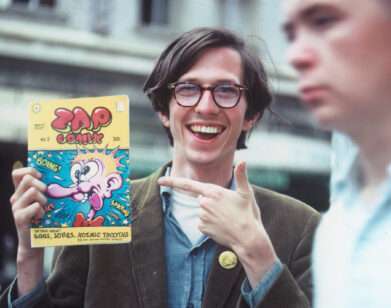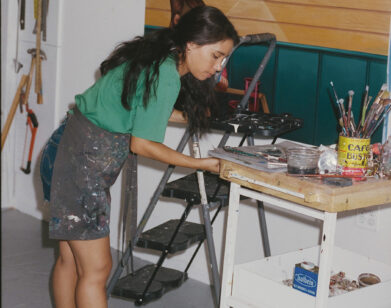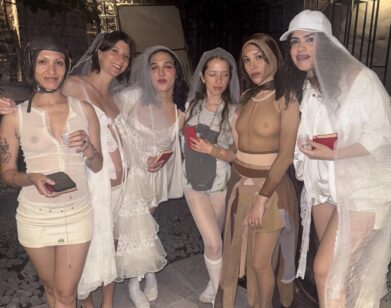Robert Dupree, on the Block
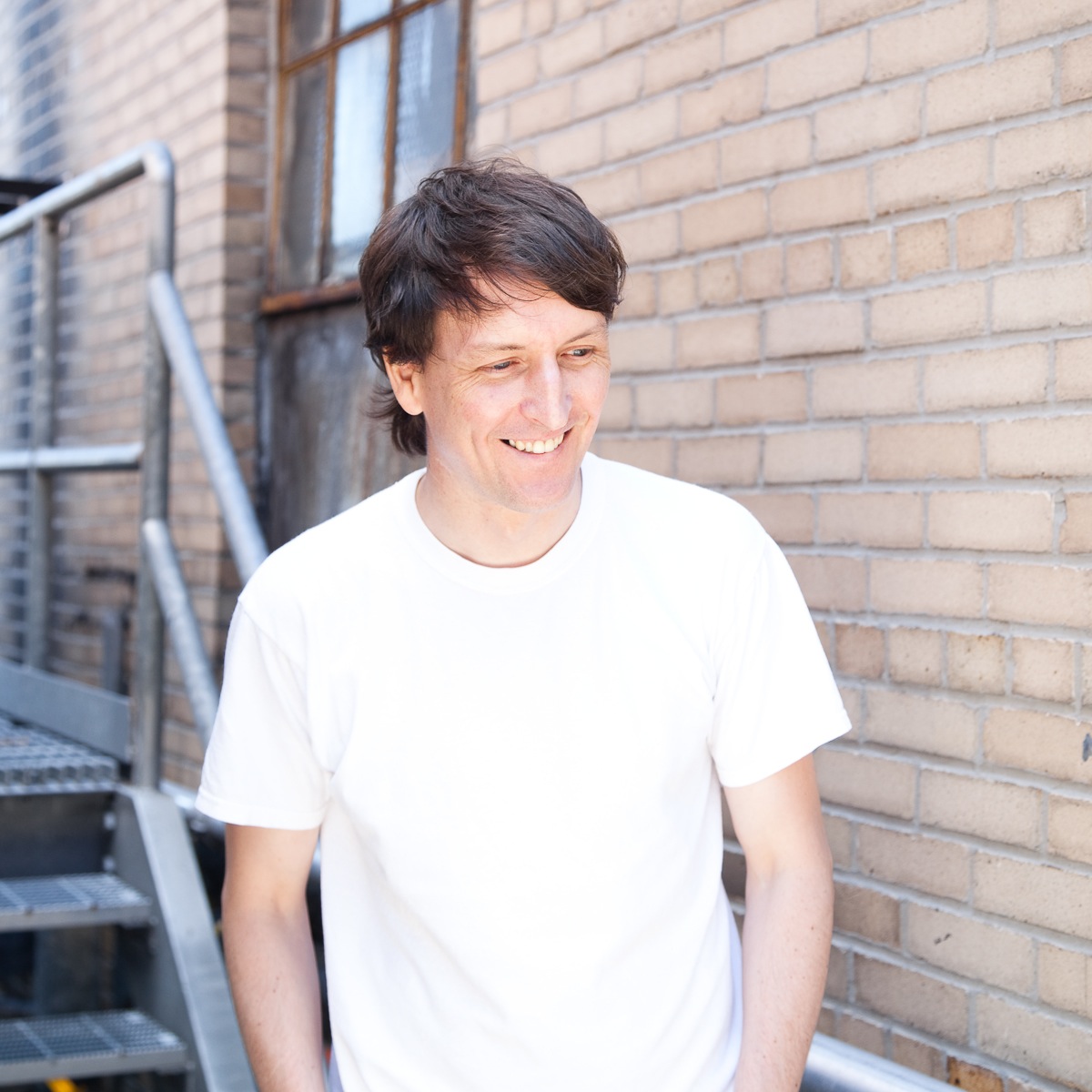
ABOVE: ROBERT DUPREE. PHOTO BY THEA GOLDBERG
Robert Dupree, for better or worse, isn’t angry. In May, the New York-based artist and photographer had several of his works censored and removed from The Select Art Fair—which, as of this writing, continues to occupy lobby and gallery space at The Out Hotel, a “straight-friendly” urban resort and entertainment complex in Manhattan’s Hell’s Kitchen, now the epicenter of gay life according to the hotel’s website.
Several days into the show, Gary Schweikert, the hotel’s CEO, came face-to-face with Dupree’s prominently displayed work for the first time. Moments later, he sent an email to his now former Creative Director, Patrick Duffy (now of Hotel Americano in Chelsea), stating his discomfort with the work, his surprise and subsequent confusion regarding who gave permission to feature it. “Three large nude photographs are pushing the limits in my opinion,” he wrote.
When asked whether he left The Out due to Dupree’s censorship at the Select Art Fair, Duffy generously replied, “Yes, sir. I couldn’t take it anymore.”
The three photographs in question, Wrapped and Delivered and Bleach from Dupree’s “Torture Me/Torture You” series, and Sacrifice from his “Progeny” series, were taken down. Two of Dupree’s featured videos, Hotness and Slap, were also removed. It fell to Murphy to inform the show’s curators, Art Basel standouts Matt Eck and Brian Whitely, what had transpired. Whitely, in turn, called an unsuspecting Dupree at his day job, where he serves as a photographer and project manager for a prominent and decidedly unnamed high-end fashion designer.
“He took it really well,” Whitely explained. “Though we knew we had to find him a new space. Matt and I immediately thought of Johnny.”
Enter Johnny Sagan, the gallery, fashion, and nightlife impresario responsible for connecting the young editors of Superchief Magazine, Ed Zipco, and Bill Dunleavy, with Ari Stern and Cole Schaffer, owners of Culturefix, a multifaceted bar, gallery, and event space on the Lower East Side with a reputation for exhibiting adventurous and often subversive artwork. Sagan, now serving as Program Director for the Superchief Gallery at Culturefix, jumped at Eck and Whitely’s offer to lock in Dupree for a defiant solo exhibition, appropriately titled “Cock Blocked,” opening at 7 pm tonight. Duffy will serve as the evening’s honorary host.
On a recent, warm Wednesday evening on Clinton Street, a polite and well-groomed Robert Dupree discussed his feelings on the Select Art Fair, the merits of censorship, photography as performance art, and his ex-girlfriend Heather, a mysterious young woman who appears in much of the artist’s work.
KURT MCVEY: What was going through your mind when Brian [Whitely] called and explained that your work had been taken down?
ROBERT DUPREE: I wasn’t surprised that it evoked such a strong reaction. I’m used to people being a little bit taken aback by my work. If I’m in a bar and I hand you a flyer showing my cock wrapped in plastic wrap, you might be offended.
MCVEY: You weren’t offended or disappointed that they took it down?
DUPREE: I understand. It’s a private hotel. Disappointed? A little. I’m more upset about how the work was physically handled. I would have appreciated if they [The Out] contacted me personally before the work was removed, just to ensure that it wasn’t compromised in any way.
MCVEY: How was the work compromised?
DUPREE: Some of the larger prints were creased, but now they’re fine. I personally paid for and constructed housing for the work, which was thrown away without my approval. That’s upsetting. I can’t exactly stuff three huge 40″ x 50″ prints in the trunk of my car without proper housing. As far as my feelings go, I think I would be a lot more up in arms if it was a friend’s work that had been censored; then I’d probably make a big deal out of it. Personally, I’m used to it. I was censored during my MFA show at Parsons in 2008. They put my work in a tiny little ancillary room.
MCVEY: Your first art time-out.
DUPREE: [laughs] Right. I knew that if I complained or made a big deal out of it, I probably could have received a great deal more attention. I wanted the work to stand on its own.
MCVEY: What was the most offensive piece in their eyes?
DUPREE: Probably My Penis in Between Barbie’s Legs. That’s the name of the piece. It’s literally just that. That one really freaked people out. It was also the first one that incorporated me as a subject.
MCVEY: Barbies have become controversial in their own right.
DUPREE: Right, and that’s definitely part of it. But my work will never be about épater la bourgeoisie. I want my work to be renowned for its artistic merit, not the controversy surrounding it. My work is about love. It’s about curating emotion in life, especially in relationships.
MCVEY: And pain?
DUPREE: That, too.
MCVEY: Would you call your work controversial?
DUPREE: It all depends on the sensitivity of the viewer. When I show people in the high fashion world my artistic work, they usually stop talking to me altogether.
MCVEY: That’s surprising. Does the designer you work for support your artistic vision?
DUPREE: Of course, well, spiritually at least. I have to protect her best interests which means, sometimes I have to distance myself from her, or her from me, rather. [laughs]
MCVEY: You realize it’s tough to keep anything a secret these days.
DUPREE: If people want to go the extra mile and do some investigative work, that’s fine, I guess. I just won’t drop her name here. It’s the least I can do.
MCVEY: Do you find it difficult to separate your commercial identity from your artistic persona? Are you living a double life, so to speak?
DUPREE: As an artist, I prefer to go by “R.” Let me also stress again that I consider myself an artist, not a photographer. This is only due to the fact that, in order to execute a particular piece, I may require materials that exist outside of photography. As an artist, I can also be a filmmaker, a performer, a photographer, or maybe something else entirely—something, perhaps, as of yet undefined.
MCVEY: Who are your influences?
DUPREE: I really appreciate 1970’s performance art. [Robert] Mapplethorpe for his courage. Diane Arbus for stressing the importance of “curating the moment.” Henry Cartier-Bresson, also. He called it the “decisive moment.” I had the amazing opportunity to meet Marina AbramoviÄ? during my MFA show, and she was very supportive. She’s “the “grandmother of performance art,” after all.
MCVEY: It’s interesting. I recently spoke with Ventiko, a talented and somewhat controversial artist in her own right. I was sure she identified herself as a “performance artist,” but she went out of her way to stress that she was first and foremost a photographer.
DUPREE: I think performance art is just extremely difficult to do well. When I first showed Marina Wrapped and Delivered, she pushed me to turn it into a performance art piece.
MCVEY: Did you?
DUPREE: No, because I feel like a high-quality photograph should function as performance art. The difference is the performance is taking place in the viewer’s mind, which, like photography itself, is much more enduring. That’s why the pieces are life-sized. I want you to step in and get close. I want you to walk through the keyhole of my life.
MCVEY: You seem to be comfortable in the nude.
DUPREE: I’m not Brad Pitt in Fight Club or anything, but I’m not Sloth from The Goonies, either; I’m somewhere in between. [laughs] There was this one instance, after my first and decidedly last foray into street art, I pasted a huge print of Hang, my artistic depiction of what is often referred to as a “Palestinian Crucifixion,” on the corner of 16th Street and 8th Avenue. I had really, really high hopes for the piece. It was a real bitch getting that thing up there, and I had a lot of help. I came back the next morning, and it was gone. About a month later I found out that a girl from Parsons who had a crush on me stole it and put it up in her bedroom. It had to have taken her all night.
MCVEY: That’s some serious determination. How did you find out?
DUPREE: She called me literally a month later and confessed. [laughs] Flattering, but also extremely frustrating.
MCVEY: That’s insane. Why do you think people have such strong reactions to your work?
DUPREE: Because I think they can tell that I’ve built up an argument for what I’m trying to say.
MCVEY: I’m glad you mentioned Hang from your “Torture Me/Torture You” series. Each piece within the collection seems to reflect upon a specific “enhanced interrogation” technique employed at Abu Ghraib. How much of this series reflects your own personal interest in this subject from a political or humanitarian perspective, and how much stems from your own physical and mental anguish?
DUPREE: It depends. Both.
MCVEY: There is a really interesting feature on your site called, “Buy a Day of My Life,” where you invite the public to literally purchase a day of your life for $75. One particular moment is “First time I tried to off myself,” implying that you attempted suicide more than once.
DUPREE: Twice. I gave up alcohol after my second attempt. It makes me rather impulsive, to say the least.
MCVEY: Why did you try to kill yourself?
DUPREE: My ex. Both times. The girl in all the photos and videos. A great person, but a horrible girlfriend. A chronic cheater. Irresistibly charming. A great photographer in her own right. She’s an awesome friend. She’s still involved in a lot of my work.
MCVEY: How did you do it? Forgive me, but I feel compelled to ask.
DUPREE: The first time was pills; the second time, I rammed a broken Corona bottle into my neck on her doorstep, just missing my jugular. She opened the door, and I did it. Blood was fucking everywhere. While waiting for the ambulance, she took a Polaroid of me lying there on the ground. The cops confiscated the photo, and I never got to see it. I spent three days in the ICU and two weeks in Bellevue.
MCVEY: You seem like you’re in a good place now.
DUPREE: I am, but I’ll still yell at an intern like a motherfucker. [laughs]
“COCK BLOCKED” OPENS AT CULTUREFIX GALLERY ON THE LOWER EAST SIDE TONIGHT. FOR MORE INFORMATION, VISIT THE CULTUREFIX WEBSITE AND DUPREE’S WEBSITE.

